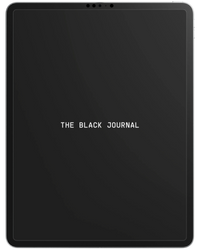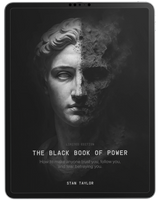A passionate debate with someone can sometimes spiral into a back-and-forth of contradicting evidence and dismissals of ideology. You end up both walking away from the conversation convinced that you were the one telling the objective truth. You can have the source you think is correct, and they will also, but neither one of you is willing to accept that the other person is correct.
There's absolutely no clarity from the exchange. If anything, you put a fortress of walls around your mind that protects your version of what's true. It's a frustrating experience that's actually the signature of the invisible mechanisms that govern the modern mind.
Have you ever experienced this? If you have, you've encountered the fundamental, dopamine-driven structure of self-deception. It's a phenomenon known as confirmation bias, representing an active cognitive strategy.
Understanding how to avoid confirmation bias is essential. It's a foundational error in our cognitive system that allows the entire cycle of mass manipulation to function.
What Is Confirmation Bias?
Recognizing the antiquity of the concept helps us understand the fundamental failure of human judgment that surrounds confirmation bias. The actual term, confirmation bias, emerged as a psychological definition around 1977.
Before that, in the 17th century, renowned philosopher Francis Bacon created a powerful, pre-psychological diagnosis of confirmation bias. He categorized it as one of his "Four Idols of the Mind," or more specifically, the Idols of the Tribe. Bacon argued that humanity falsely assumes its most natural sense of things is correct.
With that ideology, he believed we pollute and distort reality by projecting our own nature on it. We see order in randomness and filter external reality through a lens that gives us internal comfort.
To understand this flaw, it's essential to recognize that the desire to alter reality for our own comfort is a mental shortcut, or what some call a heuristic. It's the almost subconscious process of our mind looking for the lowest-energy path of accepting what aligns with your current belief system for cognitive ease. The opposite would be enduring the high cognitive cost of changing your core beliefs. It is a survival strategy, designed for consistency instead of truth.
Everyday Examples of Confirmation Bias
The Wason Selection Task is the classic laboratory demonstration of confirmation bias. It shows that some individuals preferentially seek evidence that confirms a rule and deliberately overlook the data that would logically disconfirm it.
In modern social structures, we're seeing this level of bias drastically amplified. Several studies confirm that, when evaluating political messages, for example, individuals show signs of conformation and disconfirmation bias. They will selectively look for the supportive data and excessively scrutinize opposing information.
It's an innate psychological tendency that the modern digital information environment we're living in is only making it worse. We have access to an endless amount of news articles and data at the click of a button.
Macro-level phenomena such as "filter bubbles" and "echo chambers" systematically increase the likelihood of exposure to information that confirms existing preferences.
It's a type of algorithmic reinforcement that automates the biased search for information, accelerating polarization in speed and intensity. Computational models have shown that the polarization resulting from this self-affirmation loop is highly resilient.
Belief perseverance bias (BPB) is the most dangerous subcategory of confirmation bias. It's where deeply and cognitively ingrained beliefs persist even after the evidence supporting them has been discredited.
Recent research shows modern society is more resilient to this bias, especially relating to public health. A 2024 study investigated misinformation and found that after misinformation was explicitly retracted, 42% of participants still experienced BPB.
Investigations have also sharpened our understanding of how deeply embedded and resilient this bias is. For example, a 2024 study found “a common factor underlies different measurements of confirmation bias across experimental paradigms.” In other words, it’s not just one kind of confirmation bias in one kind of task. It’s a structural cognitive tendency that cuts across contexts.
That finding confirms what many of us have sensed: this bias isn’t simply a quirky human failing. It’s a default mode of the mind. Researchers such as Uwe Peters have argued that the bias may even have adaptive roots, serving to help us influence social environments to match our beliefs.
So yes – what you call the “survival strategy” for consistency, not truth, has evolutionary scaffolding.
And there’s more. Studies of web-search behaviour show that when people have entrenched views and low domain literacy, they skip over opposing evidence almost reflexively. One study found that users with poor health literacy and negative prior beliefs spent minimal time evaluating contrary pages.
Plus, in science itself, this bias sees unchecked growth. A review of empirical research shows many scientific fields fail to implement robust safeguards against confirmation bias. That means if you thought “science is immune,” you’re mistaken. The fortress of belief works even behind white lab coats.
Why Confirmation Bias Is So Dangerous
The implications of this chemical reinforcement go far beyond individual stubbornness. It shapes how societies polarize, how misinformation spreads, and how truth itself becomes negotiable.
What researchers now call motivated reasoning is the psychological umbrella under which confirmation bias operates. Ziva Kunda’s seminal 1990 paper established that motivation influences not only what we think but how we think. Our reasoning process becomes goal-oriented rather than truth-oriented, designed to reach emotionally rewarding conclusions, not necessarily accurate ones.
Subsequent research has continued to build on this foundation. A 2018 study from Yale University’s Cultural Cognition Project demonstrated that when people are presented with politically charged evidence, their analytical ability does not predict accuracy, it predicts selective accuracy.
The more cognitively skilled participants were, the better they became at rationalizing evidence that supported their worldview. Intelligence didn’t protect them from bias; it only armed them to defend it more elegantly. This is why the phenomenon isn’t confined to the uninformed. It can corrupt even the most educated thinkers.
Neuroscience adds a chilling dimension to this picture. A 2016 paper in Nature Neuroscience by Kaplan, Gimbel, and Harris found that the brain’s valuation circuitry, particularly the ventromedial prefrontal cortex and nucleus accumbens, responds more strongly when participants encounter information confirming their political beliefs. The same reward circuits activated during positive social feedback or financial gain light up when we feel “right.” The neural evidence is unmistakable: being correct feels as good as being loved or being paid.
This pattern is reinforced by what psychologists call cognitive dissonance avoidance. Leon Festinger’s 1957 theory described how conflicting information creates psychological discomfort. The brain interprets that tension as a threat, prompting mental strategies to eliminate it, by rejecting, downplaying, or reinterpreting the new data.
A 2019 review in Frontiers in Psychology expanded this concept, showing how dissonance triggers stress-related neural pathways, including activation of the amygdala and anterior cingulate cortex, regions responsible for threat monitoring. In short, disagreement is experienced as danger.
That physiological discomfort explains why ideological correction so rarely works. Even when false information is debunked, belief perseverance bias ensures it lingers. A 2021 PLOS ONE study by Nyhan and Reifler demonstrated that corrections to misinformation can paradoxically strengthen original false beliefs, a phenomenon now termed the “backfire effect.” This shows how the dopamine-reinforced loop of validation creates not only resilience but resistance to truth.
The societal danger is that these mechanisms don’t stay private. Social media algorithms exploit them. Platforms measure engagement , clicks, likes, shares, all driven by emotional intensity, not intellectual rigor. A 2022 MIT Sloan study revealed that false or confirmatory content spreads six times faster on social networks than neutral or corrective posts. The reason is simple: affirmation produces emotional reward, and emotion drives virality. The same neurochemical reinforcement that cements personal bias also powers digital misinformation economies.
Within individual psychology, this manifests as an erosion of epistemic humility, the capacity to doubt one’s own knowledge. A 2020 study in Psychological Science by Rollwage and Fleming found that overconfidence correlates with decreased functional connectivity between the prefrontal cortex and insula, impairing error detection. The less we recognize our mistakes, the more our brains shield us from learning.
The extreme form of this cycle aligns with what you described through narcissism. Grandiose narcissism represents a state where the self’s internal narrative becomes entirely insulated from disconfirming feedback. A 2017 neuroimaging study in Personality Neuroscience observed that individuals with high narcissistic traits show hyperactivation in the medial prefrontal cortex, the neural hub of self-referential thought, alongside reduced activity in the anterior insula, the region tied to empathy and internal error awareness.
In essence, narcissism is confirmation bias turned pathological: the mind becomes a closed system, self-referencing and self-rewarding, incapable of correction.
These same neural signatures can be traced, in milder form, across social polarization. When two opposing groups interpret identical facts through opposing lenses, it’s not merely ideology; it’s neurochemistry. Both sides are running reward loops for consistency, producing the illusion of moral clarity. As a 2023 Trends in Cognitive Sciences review notes, this alignment between reward systems and belief maintenance may have evolved as a mechanism for social cohesion.
If left unchecked, this process scales into what political scientists term epistemic fragmentation, the breakdown of shared reality. Each cluster of belief becomes its own dopamine-regulated micro-culture, self-sustaining and self-validating. The modern information ecosystem amplifies this to an industrial scale. Every notification, every “like,” every affirmation of correctness feeds the same mesolimbic cycle that Bacon warned about centuries ago, our tendency to “pollute reality with our own nature.”
Practical Strategies to Avoid Confirmation Bias
Overcoming this bias requires overriding a deeply rewarding biological default. As you can imagine, that's not something people can easily do. The solution means perfecting the process of internal inquiry, not in consuming more facts.
The single most effective individual strategy for mitigating this bias is known as Considering the Opposite. The process involves actively looking for and evaluating possibilities that are inconsistent with the initial belief or hypothesis. However, you can imagine this isn't something people do naturally. It's a counterintuitive discipline that forces the thinker to disrupt the dopamine reward cycle derived from being right.
Putting this into context, before you advocate for something you believe to be true, you must articulate the three strongest, non-strawman arguments supporting the opposing position. It's an excellent mental exercise.
If you are working within research or a complex field, understanding how to avoid confirmation bias in research requires adopting the gold-standard debiasing techniques from experimental design. Those include:
-
Randomization
-
Blinding (or Masking)
-
Objective Outcome Measures
These structural rules eliminate human discretion.
Applied to everyday life, this becomes the principle of Pre-Commitment for Personal Decisions. You must define the standards for objective results, such as what evidence would support, disprove, or be useless, before the data is collected or the decision is made. This proactively prevents unintentional self-justification.
For that to be possible, you need a systematic way to measure and improve your internal discipline. How can you avoid confirmation bias by building this discipline? Through metacognition. This is the ability to think about your own thought processes.
Another useful tool is the Cognitive Reflection Test (CRT). It measures an individual's ability to override an intuitive answer in favor of a reflective, analytical solution. This capacity for reflection is the ultimate defense against bias.
The insights from The Black Book of Power reveal that these cognitive biases are often exploited by people who understand power dynamics. The book's framework of becoming an "unmoved mover" teaches you to recognize when your confirmation bias is being weaponized against you, allowing you to transform this vulnerability into strength.
One Last Point
People inhabit confirmation as though it were internal hardware you inhabit. It's not necessarily an error you can erase.
The solution to bias is discipline. It's the active, daily commitment to seeking opposing views to define the terms of your own defeat. You're continuously refining the new operating system that makes you psychologically invulnerable.
As I explored in The Black Book of Power, this new so-called operating system requires understanding your shadow dynamics and cognitive vulnerabilities.





